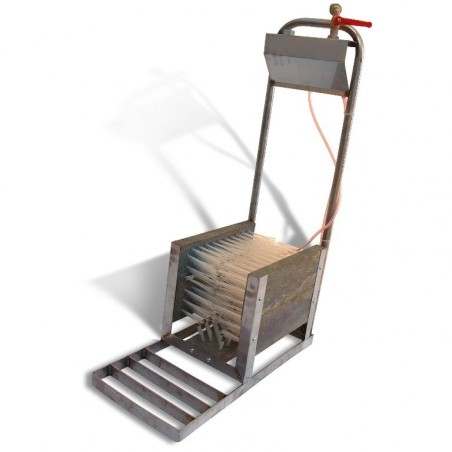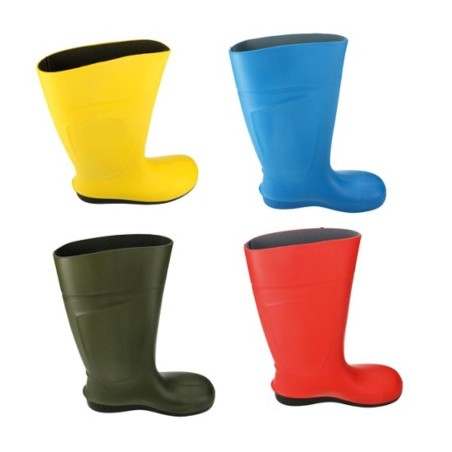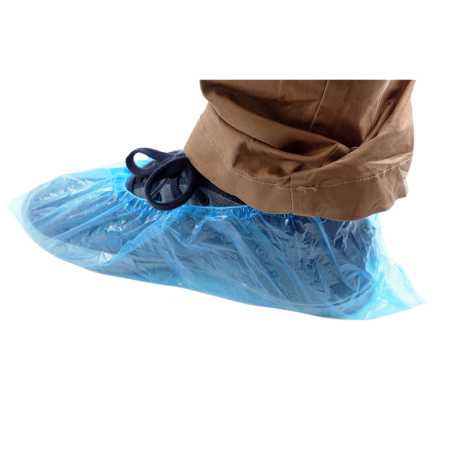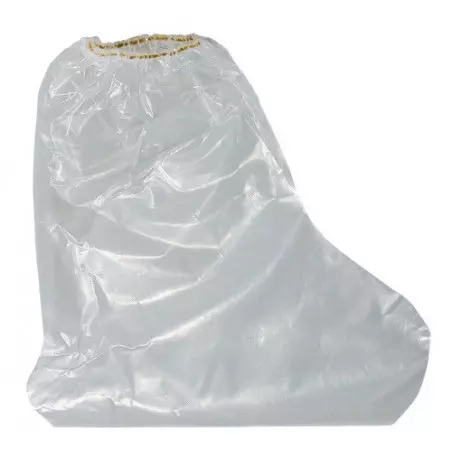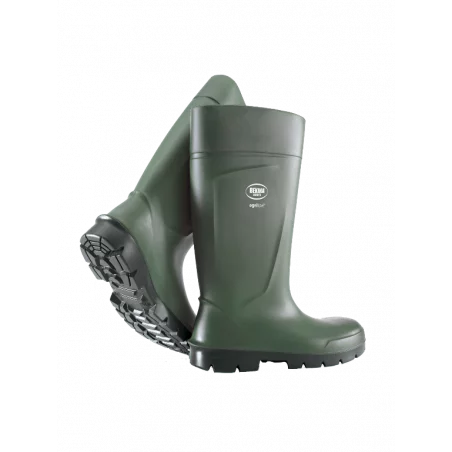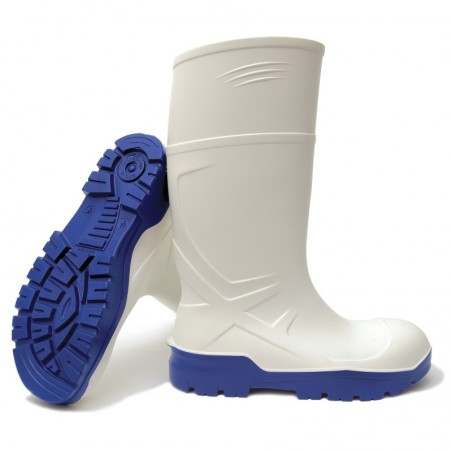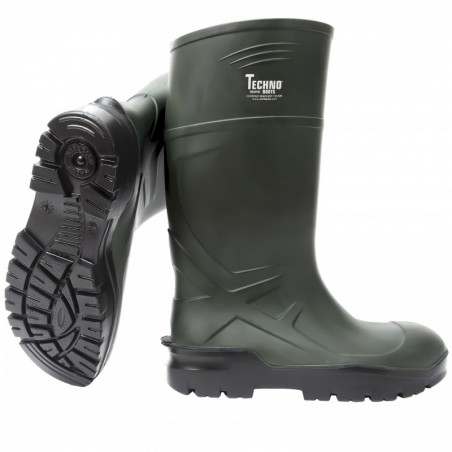The entry of employees is one of the most frequent events that occur on swine farms and every time someone crosses from the dirty zone to the clean zone there is a risk of pathogen transmission. Minimizing that risk is the goal of every entry protocol. Regardless of the personnel entry design of the farm, every entry should have a clearly defined segregation between the clean and the dirty zones. But how should these zones be clearly defined? How should personnel move from one zone to the next? How can we monitor our strategy and continuously improve upon the process? Let’s explore some of the concepts currently being utilized across the swine industry.
Preventing contamination of the dirty zone

The best way to prevent a cross contamination event at the personnel entry point is to minimize the likelihood that the dirty zone outside of the farm is contaminated in the first place. It is important to keep vehicles that visit the production site clean on the inside and outside. Employee and visitor vehicles should be parked in a designated location away from the traffic area around the production facility. After parking in the designated area, it is highly recommended, especially for visitors, to step into plastic foot covers as they exit their vehicle so that their footwear does not touch the ground. These foot covers should be used to cover the footwear and protect the site from contamination until the end of the visit when personnel return to their vehicle. This precaution protects the site being visited from contamination but also prevents contamination of the footwear at the site (Picture 1).
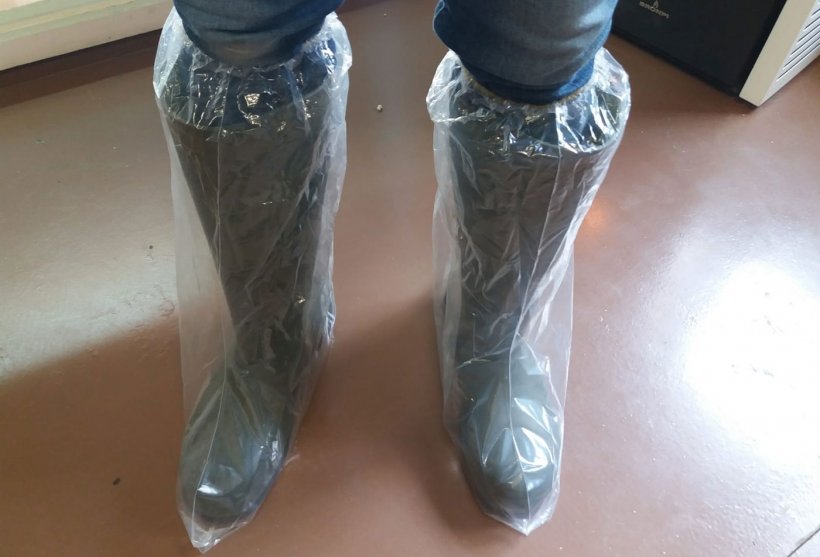
Defining and crossing the dirty and clean zones
The inner (clean) and outer (dirty) entry areas should always be clean and well organized. Materials covering the floors and walls should be durable and easily cleaned/disinfected. How to cross the zones when entering and exiting the facility should be self evident but signs with clear instructions facilitates compliance. Most well-designed entries have clear boundaries. Potentially contaminated (i.e. ‘dirty’) footwear and clothing is removed and stored on the outer (i.e. ‘dirty’) side and clean footwear and clothing are stored and used on the inner (i.e. ‘clean’) side of the entry area. The different strategies we have, to create that limit, are:
1. Red line: Painted on the floor. Hand sanitation is often required at some point prior to entering the animal production area (Picture 2). Low cost but high risk for cross-contamination.
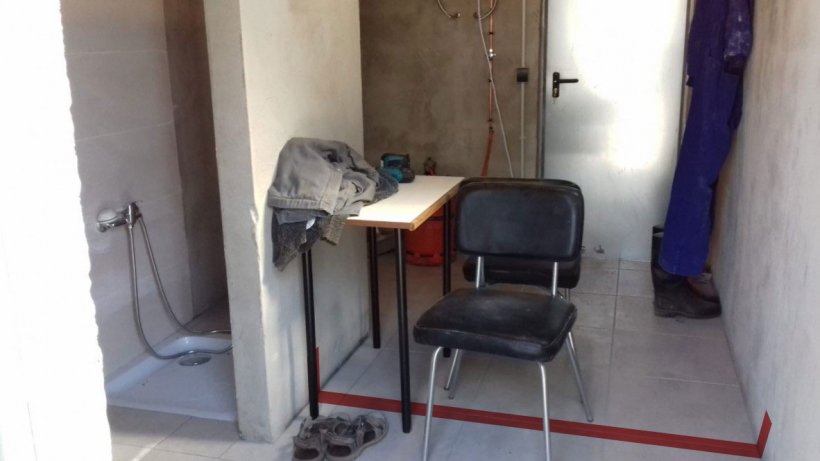
2. Physical barrier: Examples include a bench or other vertical barrier (Picture 3). A neutral zone that includes a hand sanitation station adds an additional level of zone definition. This design is often referred to as a ‘Danish Entry’ (Picture 4). Moderate cost and clearer separation with a lower risk of contamination.
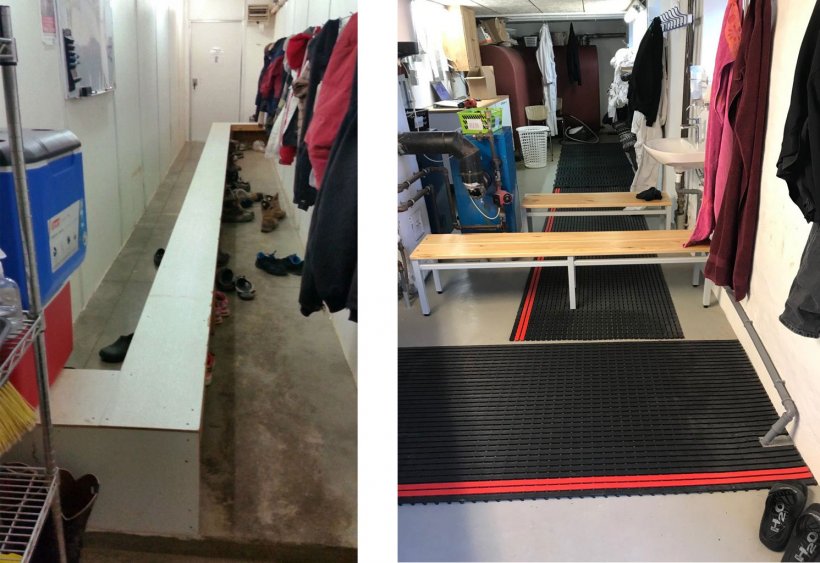
3. Shower barrier: A properly designed shower barrier requires entry into the shower from one side with an exit from the opposite side. The shower line insures that all outer clothing is removed and that personnel complete full body sanitation prior to crossing into the clean zone. Showers should be properly drained to insure that contamination does not leave the shower zone. (Picture 5)
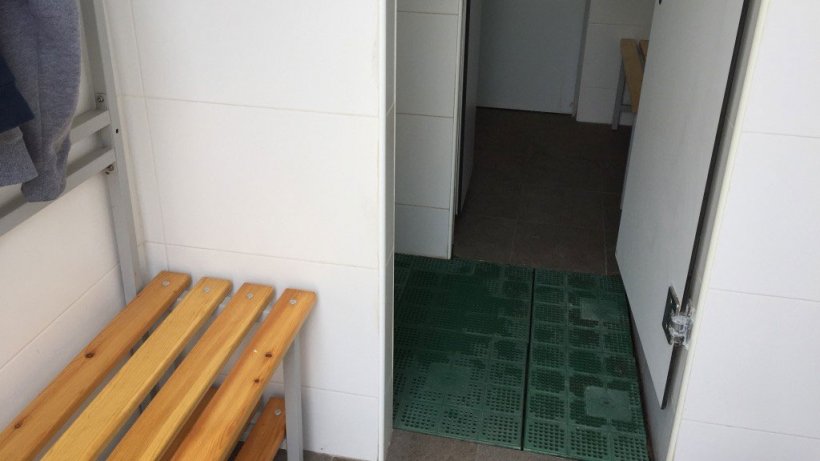
Ongoing Evaluation and Improvement
Regardless of the strategy, I always encourage producers and veterinarians to continuously evaluate compliance and effectiveness. Fluorescent powder has been extensively used in the human medicine to evaluate protocols created to prevent environmental contamination during the removal of personal protective equipment. In the swine industry, it has been used to evaluate the efficacy of transport cleaning and disinfection protocols as well as biosecurity interventions for swine farm entries. In one study (Anderson et al., 2018), the use of a fluorescent powder that glows under a UV light (Picture 6) was the mechanism used to compare how different strategies such as bench entry and shower entry would lower the risk of environmental contamination by personnel during entry. As expected, results from this study demonstrated that an extra addition of a bench significantly decreased the risk of environmental contamination by personnel in the ante-room (dirty side) prior to the shower entry.
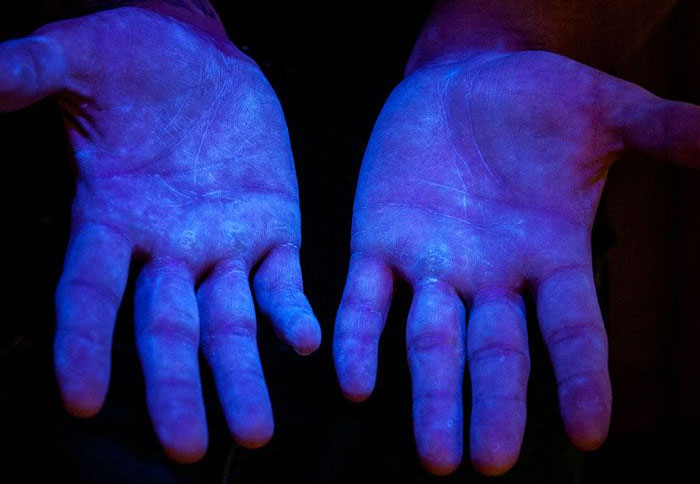
Summary
When entering a swine production facility, there are several options that can significantly lower the risk of disease transmission. Regardless of the strategy, the dirty and clean zones must be clearly designed and the method for crossing the zones must be practical and clearly communicated for effective biosecurity on a continuous basis. Finding innovative ways to evaluate effectiveness that can also help in the training of personnel and improve the process are always helpful. (e.g. fluorescent powder).




